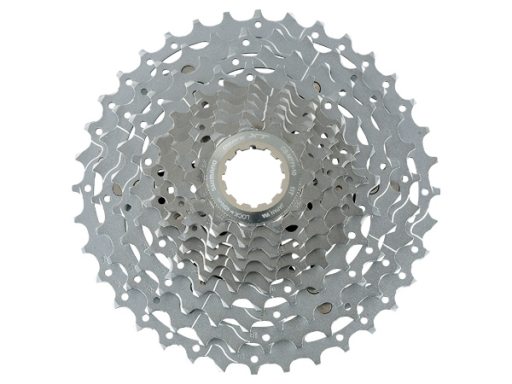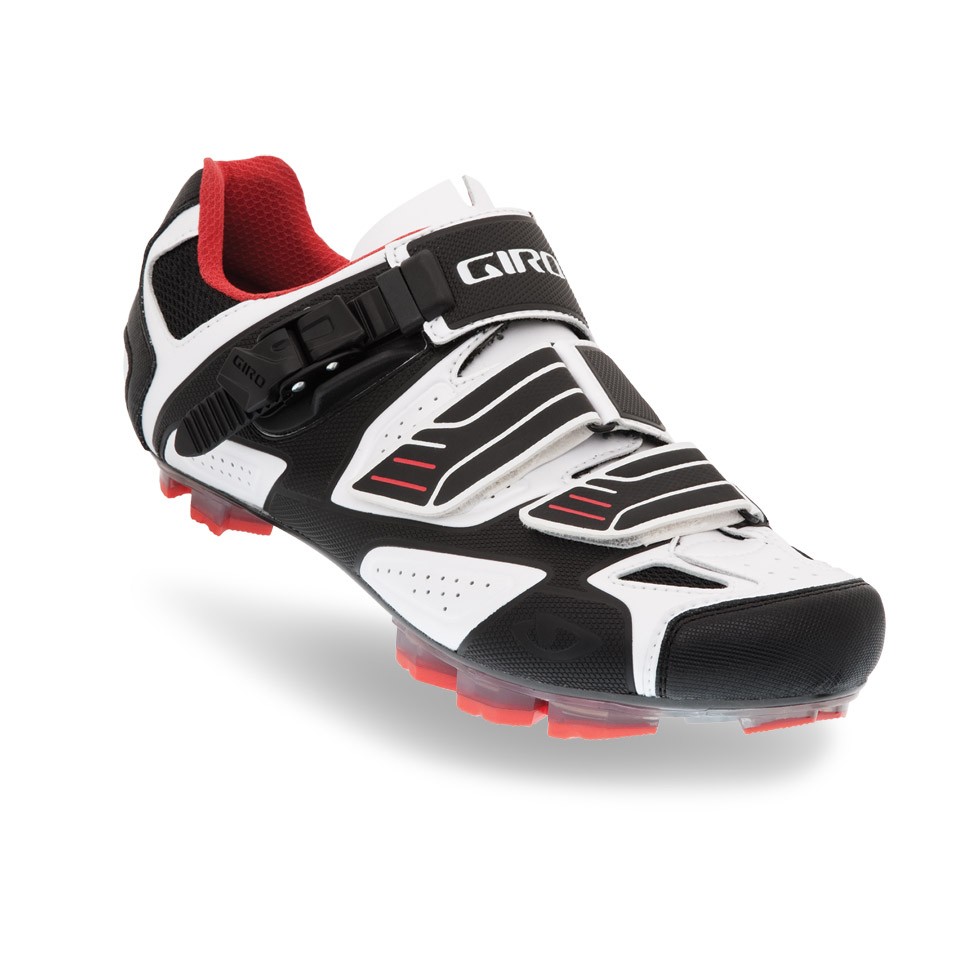DRIVETRAIN

Cassettes are often overlooked as weight-saving candidates. They tend to stay on bikes until worn out, and by that point, many riders just want to throw a cheap replacement on to get the repair done and get back out on the trail.
Although they exist close to the center of mass on a wheel, they are still rotating, and they also vary widely in weight and price. For example, Shimano’s SLX level cassette (11-36t 10sp) weighs 365g. When it’s time to replace, spend a few extra bucks for the XT and drop 80g—not an insignificant amount, especially on the back of the bike.
SRAM 10sp cassettes have a similar dip in weight from X7 to X9. Expect to pay anywhere from $85-110 for a worthy cassette. It’s money well spent when considering weight, shift quality, and durability.
A growing trend in all-mountain bikes is the single chainring setup, and this holds plenty of potential for affordable weight savings. Ditching one or two chainrings, front derailleur, and front shifter will cut a few hundred grams of your bike immediately. If you go this route, you’ll may need a chainguide, which weighs only 60-80g depending on the model. Another solution would be to get a “clutch” rear derailleur, either a SRAM Type 2 or Shimano Shadow Plus. Riders have been having good results using these without guides. Again, it’s up to you to decide if a single ring setup will work for your region, fitness level, or tolerance for pain and/or walking.
Cranksets, it should be noted, are not really a good place to try and shave weight in terms of dollars, stiffness, and durability. Do light, stiff, and bomber cranks exist? Yes, but they are about twice the price of a perfectly reasonable stiff, lighter-weight setup.
So far, we’ve touched on wheels, tires, and drivetrain as key places to drop some weight off the bike, but there are a few other spots to keep in mind, and they involve you, the rider.
ACCESSORIES

Shoes are a great place to be weight conscious. They are a rotational weight like wheels and tires and more or less in constant motion when you are out on the bike. Next time you are shopping for some replacement kicks, keep weight in mind along with fit, stiffness, and a suitable outsole.
Pedals are a different matter, however, and beyond the scope of this article. When injecting weight and cost into the equation, pedals become a morass of grams, dollars, blown up bearings, and broken spindles. Use the system that works for you.
If you ride with a hydration pack, be conscious of weight, volume, and purpose when you are buying a new one. There are some very light options out there that can work well if you aren’t carrying pads or the kitchen sink. Be sure to clean it out every now and then, too. Every month or so, I fully empty the dark recesses of my pack and find half eaten bars, weird trail litter and detritus I’ve picked up, maybe an old tube, or a crushed beer or Red Bull can or three. Also, if I’m just heading out on a short ride, I’ll only fill my 3-liter water bladder halfway. If I’m not going to drink it all, why carry it?
I never considered helmet weight until a few years ago when I started training for my first hundred-mile race. Toward the end of a rather punishing 60-mile ride, I felt like I could barely keep my head up. The next day I compared the weight of the helmet I had been using (Fox Flux) to one I was considering for my biennial replacement (Giro Xar), and I was shocked by the difference when placed on my head. Like a lighter pack, a lighter helmet may not directly help you accelerate out of a turn any faster on mile 10, but they go a long way to keep your core, back, and neck fresher longer, which can make a difference at mile 30.
WHERE NOT TO SAVE WEIGHT
Wheels, tires, drivetrain and accessories are all very effective and somewhat affordable options for saving weight. They are also places on the bike that tend to wear out, thereby allowing for the option to upgrade when it’s time for replacement, which is reasonable. But other places on the bike, like handlebars, stem, saddle, and seatpost, aren’t quite as effective or reasonable in terms of results and dollars spent.
Handlebars, saddles, and stems are quite personal in terms of fit and bike handling. Carbon bars can save you a few grams, but are limited in width choices and almost double the price of aluminum. Plus, they hit the ground a lot, so carbon can be a liability. Handlebars should also be stiff first, and light second. We have enough tunable suspension on modern trail bikes that carbon bars are unnecessary for smoothing the ride. Carbon bars can certainly be as stiff as aluminum for sharp handling, but you’re going to pay for it. (For a side-by-side comparison of four high-end handlebars—two aluminum, two carbon—see Marshal Olson’s Best Mountain Bike Handlebars review.)
Saddles are all about personal fit, and they can get expensive quite quickly. Once you find a shape that suits you, you usually have the option of some lighter rails and bodies. Again, the price/durability matrix is not working in your favor here. Much like slashing a newish, light, expensive tire, there are few things worse than finding a bent rail on your blingy lightweight saddle after a non-spectacular crash.
Stems need to be stiff; first and foremost, weights are fairly negligible. Plus, it’s nice to have the option to swap stems now and then, and who wants to see a $100 lightweight stem sitting on the bench in the garage?
Seatposts, ironically, are a place on the modern trail bike where you can count on adding some weight in the form of an adjustable height post. There are some slight differences in the weights of current “dropper” posts, but most purchases are driven by fit, function, and reliability. Add the best weight you will ever hang on your bike and get a dropper post if you haven’t already. It’s a game changer.
If building a bike up from scratch, frame weight can certainly be factored into the greater equation, but it’s not a viable option as an affordable upgrade. However, don’t be blinded by weight. Fit, travel, stiffness, geometry, and usage are far more important factors. Lighter frames will tend to flex more, which is generally a hindrance for aggressive riders.
Finally, I’m going to wrap this up with my most pedantic weight saving suggestion: look in the mirror. Treating your body right and losing some extra poundage is always the most affordable and effective weight saving tactic. It’s not quite as easy or fun as buying some shiny new bits for the whip, but it’s usually the most economical…unless you share my weakness for fancy trips to Whole Foods.

great article again – i love your simple yet informed outlook at things !
on average the cheapest way to get the total weight down is ‘look at yourself’ – and actually it is the best one as most of us do sports to get better health and you cannot beat this if you both eat right and exercise.
good riding!
wojtek